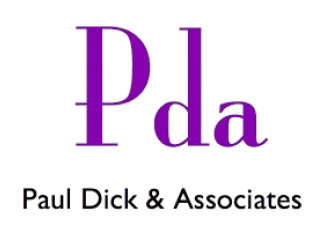We will explore the full spectrum of market assessment, regulatory validation, and development planning required to bring innovative animal health products to market. We will examine how robust market analysis drives investor interest and attracts strategic corporate partners, while also serving as the foundation for confirming regulatory pathways and requirements.
Building on this foundation, we will outline strategies and tactics for regulatory approval, the creation of targeted development plans, and approaches to expedite product positioning and launch.
Additional insights will be shared on co-development opportunities with corporate animal health companies, offering participants a clear roadmap from concept to commercialization.

Paul Dick
Dr Paul Dick D.V.M. M.Sc. obtained his veterinary medical degree with honours in 1984.
While working in clinical practice he completed his Masters in Immunology and Virology transitioning into the Pharmaceutical industry in 1988. Dr. Dick has over 25 years experience in the pharmaceutical space including general management and leadership roles, business development, commercialization, regulatory affairs, and product development encompassing medicinal, non-medicinal and natural health products.
His work in this sector has ranged from small “start up” companies to medium and large multi-nationals functioning in various capacities from research to COO and CEO.
Dr. Dick has worked extensively with Health Canada and the Canadian Food Inspection Agency on numerous regulatory submissions and on several Departmental Committees.
In addition he has been a recipient of the NSERC Synergy Award and has served as a peer reviewer of NSERC strategic grants. He is currently heading his own consulting firm ( Paul Dick and Associates Ltd.) and is the managing partner and president of a venture capital partnership (Vet Venture Capital Inc.).
Paul Dick and Associates
Website: pauldickassociates.com
Pda is a global consulting company with extensive expertise and experience in the animal health and veterinary sectors. We assist companies in terms of creating corporate value, mitigating their product development risks and, with this, accelerating their technologies into the commercial market place. These products/services include supplements, medical devices, diagnostics, digital technologies, telehealth, big data and AI, and innovations in veterinary medicine.
Our services include developing tailored strategies including conducting detailed market assessments, developing go-to-market and regulatory strategies, securing regulatory approvals, facilitating connections with strategic corporate partners and investors at the right stage. We also provide various levels of mentorship to companies as they further develop and commercialize their products/services. Further, we also create and manage expert Advisor Committees, and participate on Boards.
As Kisaco’s Start-Up Development Partner across all events, we are keen to explore synergies and potential areas of partnership.
Business Focus: deal management, growth consultant, regulatory, supplements, telehealth, therapeutics, vet med, wearables

Aniruddha Maru
Maru is a seasoned DevOps engineer with over 15 years of experience architecting solutions that scale. He currently leads the Infrastructure team at Standard AI, where he orchestrates hybrid infrastructure that powers cutting-edge machine-learning workloads that are reshaping retail.
After earning bachelor’s and master’s degrees in Computer Science from Indian Institute of Technology (IIT) Bombay, Maru has conquered diverse tech stacks throughout his career - from desktop and mobile applications to large scale distributed systems. Over his decade-plus journey through the startup ecosystem, he's delivered breakthrough solutions including smart car IoT devices, intelligent music learning platforms, and autonomous checkout systems. Maru gravitated towards the DevOps culture, finding a passion for scalable cloud-native technologies and continuous delivery of AI workloads.
Prescheduled 1-2-1 Meeting Slots
12.50-1.10 – Meeting Slot 9

